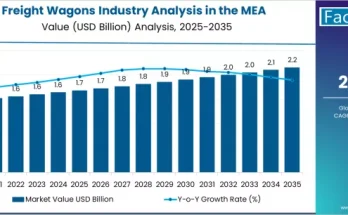An airbag is a type of vehicle safety and occupier restraint system that is designed to protect occupants during a vehicle collision. The airbag module is planned to inflate very quickly and then deflate very quickly in an event of a collision or collision with a surface, or event of sudden rapid deceleration. The modern protective airbag consists of an airbag cushion, flexible nylon fabric bag, inflation module, and crash sensor. The purpose of airbags is to offer occupants soft cushioning and protection in the event of a collision to prevent fatal injuries.
The airbag system is designed to react instantaneously to the pressure between the occupant and a steering wheel. The airbag unit must remain intact even in a low speed crash. Any impact sensor that detects a collision and inflates an airbag must take all these limitations into account. The contraction process occurs when N2 production stops and gas molecules escape the bag through the openings.
Adopting a safety norm for a safe ride is curiously important in today’s world where driving is a necessity. The focus is mostly on adopting and bringing innovations for the safety of traveler manufacturers.
The market for automotive airbags is expected to grow to 5.6% CAGR during the forecast period of 2032, owing to increasing consumer awareness of vehicle safety and increasing production of passenger cars. The automotive industry is witnessing rapid growth in passenger and commercial vehicles worldwide due to increased acceptance. According to research, the automotive airbag market is valued at US$ 206.8 Million in 2022.
Key Challenges Faced by Airbag Manufacturing Companies:-
The biggest challenge that airbag manufacturers are facing is defects in airbags while inflating. Severe measures had been imposed by carmakers to boost an inspection of the airbag igniter machine. Airbag manufacturers have reached the limits of cost optimization and are now looking for ways out of the cost spiral. This clarifies why many manufacturers are now turning to cheaper materials such as polyester fibers. However, these materials are often characterized by high warpage due to their corresponding elasticity.
In some cases, an airbag having a defective inflator can cause it to explode upon deployment or prevent the airbag from inflating properly. A bad seal in the inflator is believed to be causing the problem. If the inflator is not properly sealed, moisture can penetrate the propellant used to inflate the airbag and cause the inflator to malfunction. These airbags can explode when deployed if exposed to high heat and humidity for extended periods of time. Such explosions have caused injuries and deaths. As airbags can detonate using an electric charge, they have been classified as “electro explosive devices”.
There have been several incidents of airbag explosions reported worldwide, causing injuries to several people. This has resulted in product recalls which has put immense pressure on airbag manufacturers.
One such incident is the Takata Recall, one of the largest vehicle recalls in United States history. According to the National Highway Traffic Safety Administration (NHTSA), around 23 people in the U.S. have been killed due to the explosion of their defective Takata PSAN air bag inflators. Further, over 67 million Takata bags have been recalled due to the threat of explosion.
To overcome such challenges, manufacturers are restrategizing by using sensors and improving airbag design, and improving their testing.
The Way Forward!
To combat the risk of airbag explosion and meet today’s airbag manufacturing challenges, airbag manufacturing companies are using various tactics which are discussed below:-
Adoption of Passenger Sensing System: Occupant detection systems are designed to help reduce the potential for inflation-related injury or death to drivers, including children, who may be improperly seated in front of an activated airbag. This advanced airbag system uses sensors in the seat to gather information that aids the airbag computer to determine whether to deploy the passenger airbag in a frontal collision.
Nylon-based Airbags are expected to be in great demand during the forthcoming period. The nylon-based airbag market continues to be driven by several advantages of the fabric including its high specific heat capacity, optimal impact resistance, and lower density. Earlier, most passenger airbags were made exclusively of polyester. However, today manufacturers are concentrating on developing nylon-based fabrics coated with organic silicones instead of neoprene.
State-of-the-art Laser Cutting Technology helps airbag manufacturers meet complex business challenges. Modern airbag design and cutting techniques can help manufacturers to meet stringent regulations to attain a virtually defect-free final quality, even when using cost-effective materials such as polyester.
Various cutting-edge laser machines are also being introduced in the market to help manufacturers to cope with airbag manufacturing challenges. For instance, in January 2022, Jenoptik launched JENOPTIK-VOTAN laser machine designed for precise airbag manufacturing
Strategies Helping the Airbag Manufacturing Companies to Boost Their Sales:
The global automotive airbag market is highly fragmented and competitive in nature due to the large presence of regional and global players. To capitalize on emerging opportunities and improve their sales, key players are focusing on launching new products, integrating novel airbag manufacturing technologies, and adopting a merger and acquisition strategy.
- In March 2020, Hyundai Mobis announced that it had effectively developed a roof airbag that prevents occupants from jumping out of the sunroof and being injured in a rollover accident.
- In July 2021, Toyota Gosei Co., Ltd announced a new innovative donut-shaped driver-side airbag with a new structure to improve safety of the occupant.


